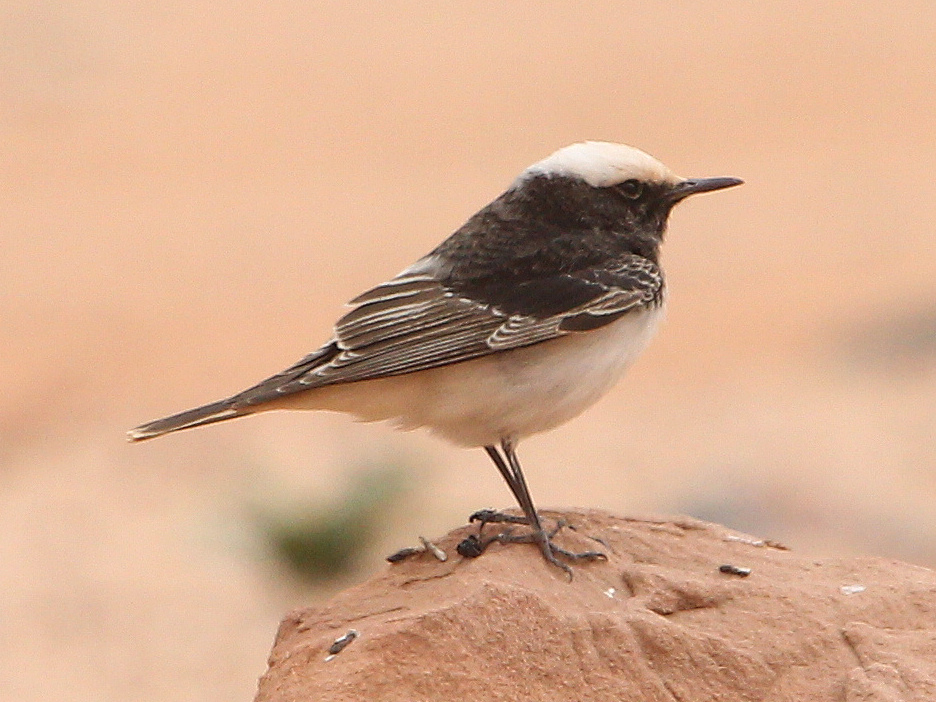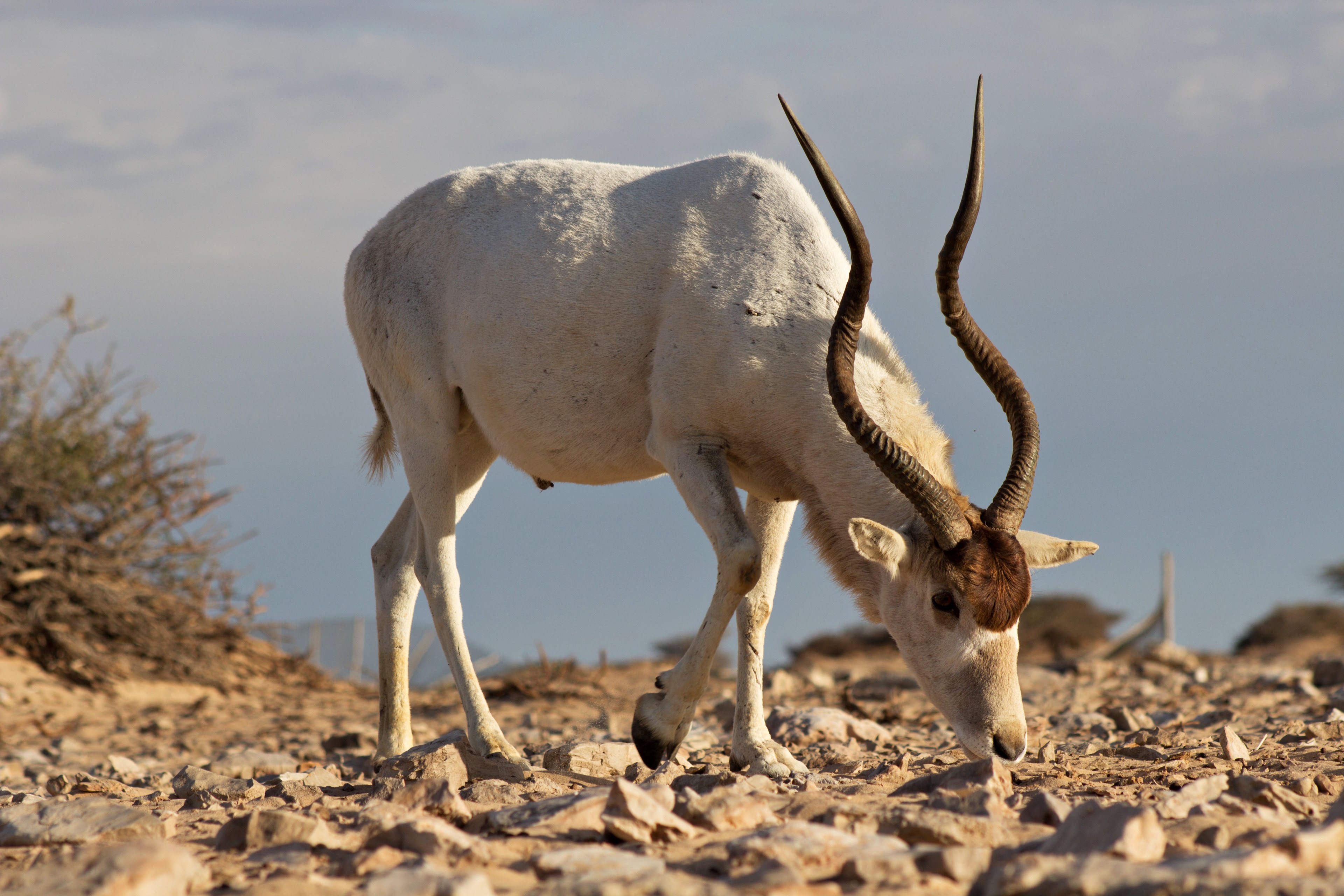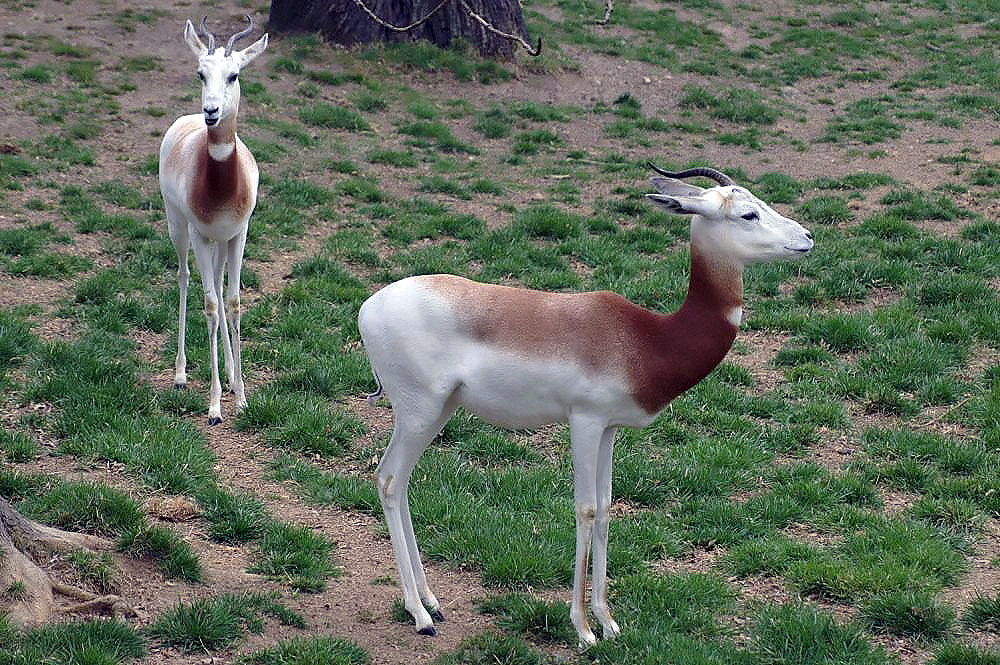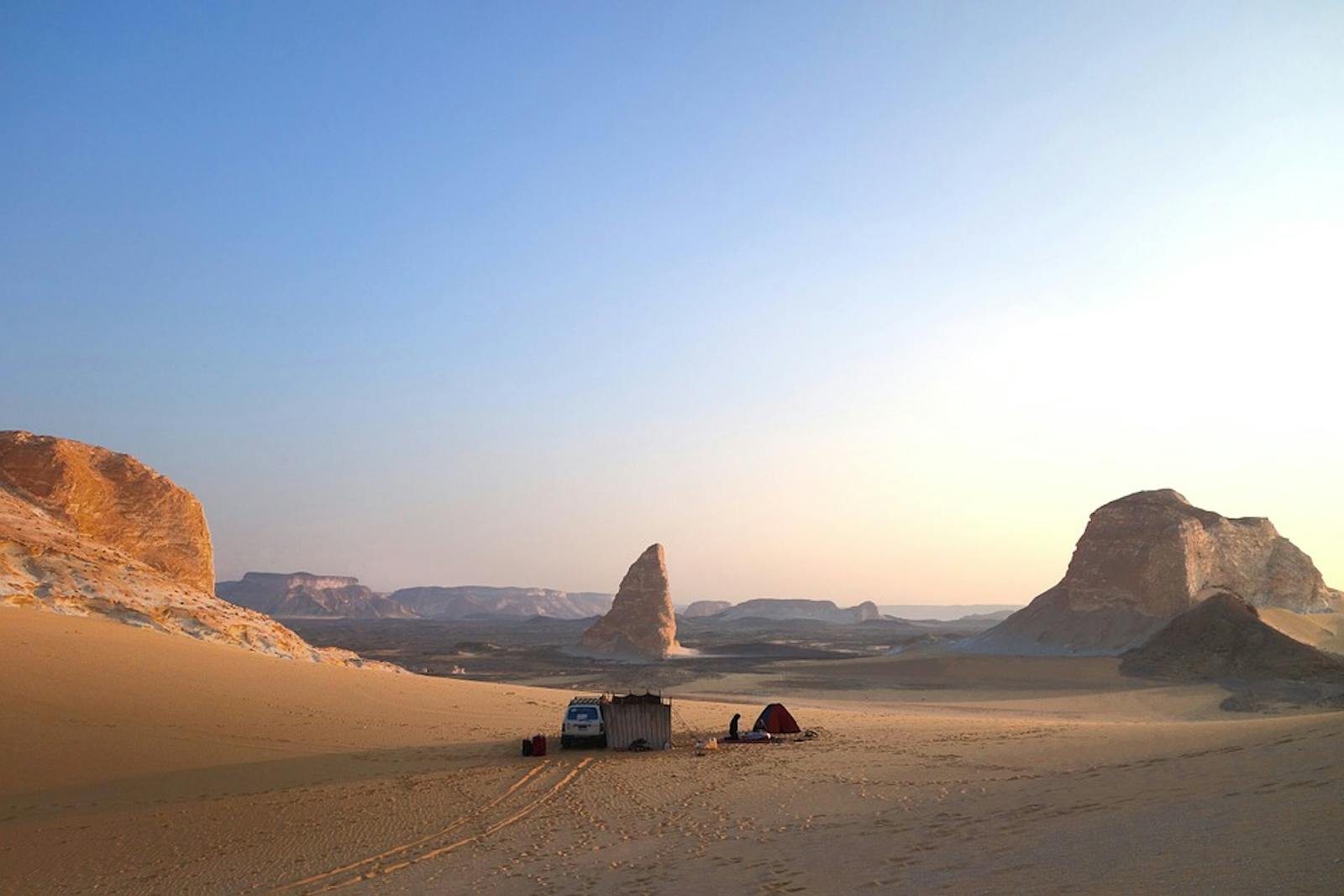East Sahara Desert
The ecoregion’s land area is provided in units of 1,000 hectares. The conservation target is the Global Safety Net (GSN1) area for the given ecoregion. The protection level indicates the percentage of the GSN goal that is currently protected on a scale of 0-10. N/A means data is not available at this time.
Bioregion: Northern Sahara Deserts, Savannas & Marshes (PA24)
Realm: Southern Eurasia
Ecoregion Size (1000 ha):
154,440
Ecoregion ID:
822
Conservation Target:
31%
Protection Level:
2
States: Algeria, Niger, Libya, Chad, Egypt, Sudan
The Sahara is the largest hot desert in the world and occupies approximately 10% of the African Continent. In this hyper-arid region, consisting mostly of rock, sand, and sparse vegetation cover, rainfall is minimal and sporadic. Temperatures vary hugely throughout the day: a single daily variation from -0.5°C to 37.5°C has been recorded. To cope with this inhospitable environment, desert dwelling wildlife have developed unique adaptive features, including large body sizes to avoid over-heating. Others get their water only through metabolic processes.

The flagship species of the East Sahara Desert ecoregion is the hooded wheatear. Image credit: Opisska, Creative Commons
This ecoregion covers the central Sahara Desert. The surface of the desert ranges from large areas of sand dunes (erg Chech, Raoui), to stone plateaus (hamadas), gravel plains (reg), dry valleys (wadis), and salt flats. Vast underground aquifers that underlie much of the region sometimes penetrate the surface, resulting in oases. Since the Pliocene (5.3–2.5 million years ago), the Sahara has experienced cycles of dry-wet periods.
Currently the ecoregion is in a ‘hyper arid’ phase, with high summer temperatures, lower winter temperatures, and an annual rainfall below 25 mm; rainfall in the eastern part of the desert it is less than 5 mm per annum. Rainfall is also highly infrequent, as no rain may fall for many years in some areas, followed by a single intense thunderstorm. The Sahara is one of the hottest regions in the world, with mean annual temperatures exceeding 30°C. In the hottest months, temperatures can rise over 50°C, and can fall below freezing in the winter.
Due to the extreme aridity of the area, many species have very narrow ranges and there are often micro-hotspots of biodiversity around water bodies which are a refugia for many species. The flora of the central Sahara Desert is very poor and mainly consists of xerophytes and ephemeral plants (called locally Acheb), with halophytes in moister areas. Vegetation is very contracted along the wadis and the dayas with Acacia sp., Tamarix sp., and Calotropis procera. Where there is sufficient ground water, hammadas are covered by Anrthirrnum ramosissimuma and Ononis angustissima.

Addax. Image credit: Creative Commons
Considering the hyper-arid conditions, the fauna of the central Sahara is richer than is generally believed; however, there are only few endemic species. One of the bird species (hooded wheatear) is regarded as endemic to the ecoregion, and there is one strictly endemic worm snake that currently remains undescribed by science. Arthropods are numerous, especially ants. The critically endangered addax, an antelope with less than 100 left in the wild, is now extirpated from the ecoregion. Other desert antelopes may still be found in small numbers, such as slender-horned gazelle, dama gazelle, and the red-fronted gazelle. The Saharan cheetah is possibly resident in Western Libya.
Due to its vastness, remoteness, and long-term political instability, little is known about the status of this ecoregion because of the general lack of scientific research. The majority of inhabitants are nomads, predominantly the Tuareg, Tibbu, and Moors. They survive by nomadic pastoralism, hunting, and trading. Most of these people are found in the desert margins and they do not often spend much time in the central hyper-arid portion. Most degradation is found where there is water. Although the Sahara desert has little protection, the protected areas that exist include the following: El-Gelf El-Keber National Park and White Desert Natural Monument in Egypt; Taizerbo in Libya; and Siwa Multiple Use Management Area and Parc Culturel du Tassili (Illizi) in Algeria.

Dama gazelle. Image credit: Courtesy of David J. Stang
The more persistent pressures to the ecoregion are found in areas of permanent water (oases), or in areas where water comes close to the surface. Water overexploitation, including through pumping water, leads to water shortages in the dry season, fecal contamination, and excessive eutrophication. The region is seriously affected by droughts and, furthermore, it is predicted to increase in future years due to climate change.
The extraction of natural resources (oil, gas and mining) is widespread, and oil exploration has increased over the last decade. Overhunting has driven many large-sized vertebrate to regional extinction. Hunting pressures have worsened due to increased roads, desert-capable vehicles and firearms. There is increased illegal wildlife killing, shown to be related to regional instability, from both extremist groups engaging in violence and from civil unrest because of political instability.
The priority conservation actions for the next decade will be to: 1) establish cross-boundary protected areas and reinforce park security; 2) promote sustainable ecotourism-based industries to improve livelihoods of local communities and conserve traditional activities, cultural and natural heritage; and 3) implement local and regional research and monitoring schemes.
Citations
- Brito, J.C., Godinho, R., Martínez‐Freiría, F., Pleguezuelos, J.M., Rebelo, H., Santos, X., Vale, C.G., Velo‐Antón, G., Boratyński, Z., Carvalho, S.B. and Ferreira, S. 2014. Unravelling biodiversity, evolution and threats to conservation in the Sahara‐Sahel. Biological Reviews. 89(1), pp.215-231.
- Brito, J.C., Durant, S.M., Pettorelli, N., Newby, J., Canney, S., Algadafi, W., Rabeil, T., Crochet, P.A., Pleguezuelos, J.M., Wacher, T. and de Smet, K. 2018. Armed conflicts and wildlife decline: Challenges and recommendations for effective conservation policy in the Sahara‐Sahel. Conservation Letters. 11(5), p.e12446.
- WWF. 2019. Northern Africa. [Online]. [Accessed 14 August 2019]. Available from: https://www.worldwildlife.org/ecoregions/pa1327

.png?auto=compress%2Cformat&w=300)

